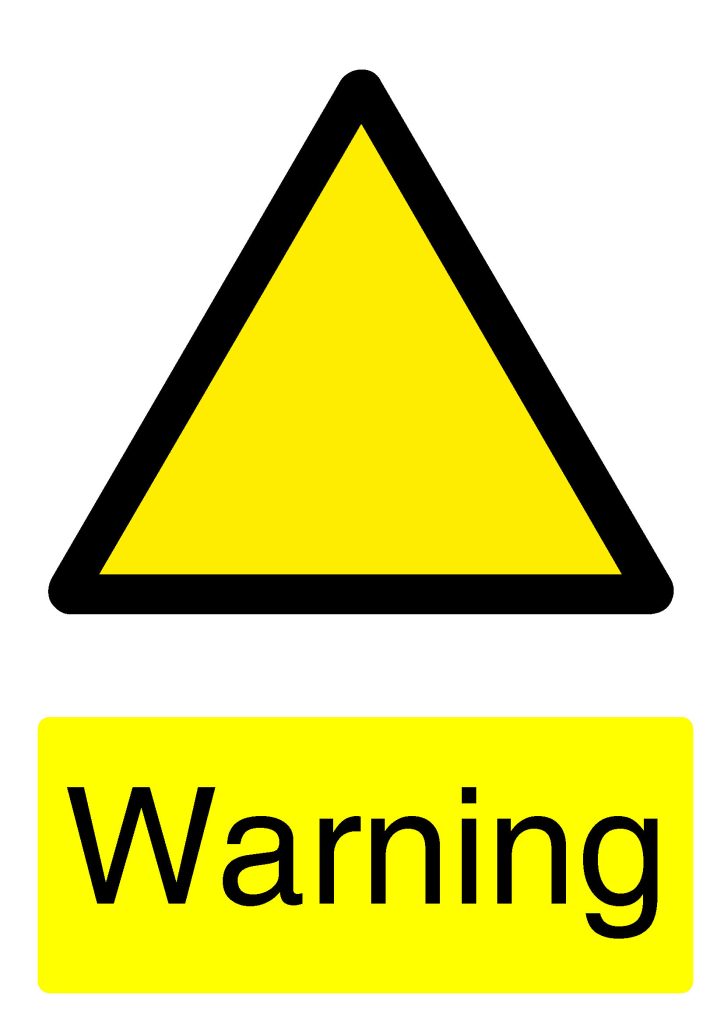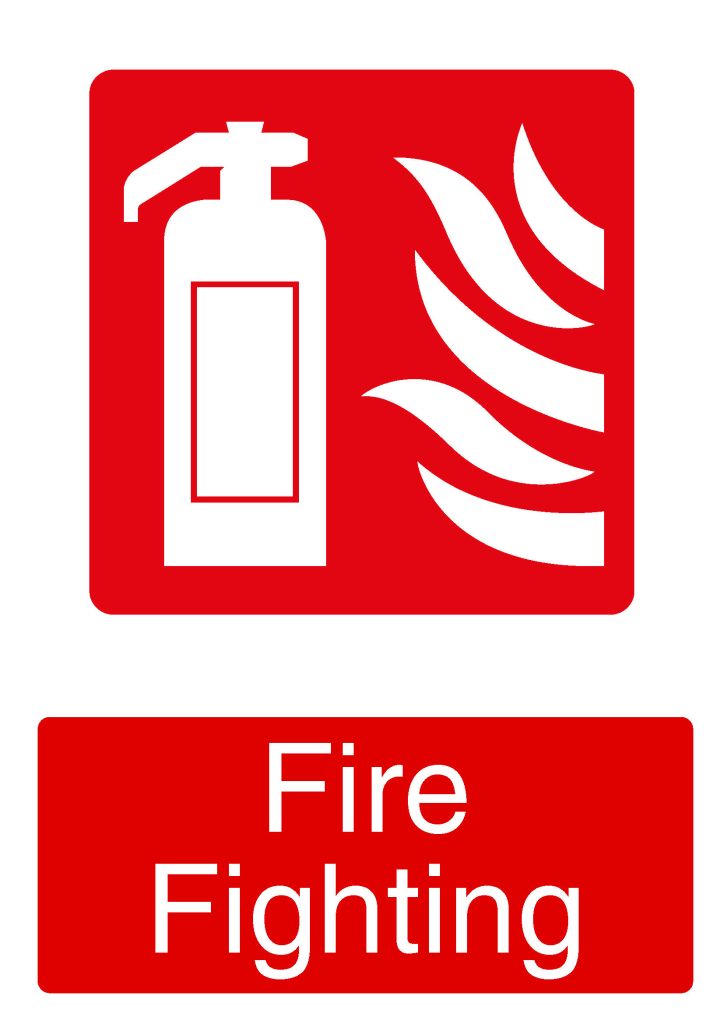Safety Sign Regulations
These Regulations brought into force the EC Safety Signs Directive 92/58/EEC on the provision and use of site safety signs. The safety signs directive was adopted by all European Union member states on 24 June 1992. This recognised the need for all workplaces to have easily recognisable signs and symbols relating to safety matters. These should encourage the standardisation of safety signs throughout the member states of the European Union. This is so that safety signs, wherever they are seen, have the same meaning. In this country, the Directive has been implemented through the Health and Safety (Safety Signs and Signals Regulations) 1996. These regulations apply to all places of work covered by the Health and Safety at work etc Act 1974.
The Regulations cover various means of communicating health and safety information. These include the use of illuminated signs, hand and acoustic signals, and the marking of pipe work containing dangerous substances. These are in addition to traditional signboards such as site safety signs such as prohibition and warning signs. Fire safety signs, i.e. signs for fire exits and fire-fighting equipment are also covered.
what this means
This requires us to provide specific safety signs where there is a risk not been controlled by other means. Where a safety sign would not help to reduce that risk there is no need to provide a sign. The regulations, where necessary, require the use of road traffic signs within workplaces to regulate road traffic. They also require employers to maintain the safety signs which are provided by them. You should also explain unfamiliar signs to employees.
The Regulations apply to all places and activities where people are employed. This excludes signs and labels used in connection with the supply of substances, products and equipment.
main categories of safety signs
Safety signs are divided into categories according to the type of message they are intended to convey. Each category is assigned a specific format and set of colours.



PROHIBITION SIGNS
These signs should he used to convey “Do Not” type commands. For example, to indicate that smoking is not allowed. In the workplace they should be used to reinforce instructions prohibiting dangerous activities. Signs prohibiting an activity consist of a circular red band and single diagonal bar at an angle of 45 degrees. The background should be white with the pictogram indicating the nature of the command in black.
WARNING SIGNS
These signs should be used to make people aware of a nearby danger. For example, a flammable liquid store or a laboratory where radioactive substances are in use should have an appropriate warning sign near the entrance. These signs are required by the Health and Safety (Safety Signs and Signals) Regulations 1996. In specific cases by the Dangerous Substances (Notification and Marking of Sites) Regulations 1990. Signs warning of a particular hazard consist of a black band in the shape of an equilateral triangle. The background within the band should be yellow. The pictogram indicating the type of hazard in black positioned centrally on the sign.
MANDATORY SIGNS
These signs should he used to indicate actions that must be carried out in order to comply with statutory requirements. For example self-closing fire doors that must be kept closed to comply with the fire risk assessment should be labeled with “FIRE DOOR KEEP SHUT” signs. A construction site where hard hats should be worn should also have appropriate signs at the entry points.
It should he noted that the Health and Safety (Safety Signs and Signals) Regulations 1996 do not apply to mandatory fire instructions but do apply to health and safety mandatory signs where pictograms are required. The minimum regulatory requirement is for the sign to include an appropriate pictogram, There are no pictograms for fire safety instruction signs and although mandatory in the UK through inclusion in the requirements of workplace fire assessments, such signs are not considered as health and safety signs within these Regulations. Thus the familiar white on blue fire safety mandatory signs using text only will not have to be changed.
Fire instruction notices, that is notices which list actions that occupants must carry out in the event of a fire are, by convention, written as white text on a blue background but not in the circular format. The colours are used to convey the mandatory nature of the instructions but because of the amount of text normally needed a rectangular format is used. The general mandatory sign of a white exclamation mark on a blue circle may be used in conjunction with a fire instructions notice.
Signs indicating mandatory requirements consist of a blue circle with the pictogram or text in white positioned centrally.



SAFE CONDITION SIGNS
These signs should be used to indicate escape routes, emergency exits, first aid equipment, emergency showers and the like. Safe condition signs consist of a green rectangle or square with the pictogram or text in white positioned centrally. In the same way as for mandatory signs some UK fire safety signs in this category are not required by the Health and Safety (Safety Signs and Signals) Regulations 1996. For example “PUSH BAR TO OPEN” is not required to comply and there is no pictogram with that meaning. Such signs are still needed for compliance with other UK legislation.
EXIT SIGNS
In order to comply with the requirements of the Building Regulations, every doorway or other exit providing access to a means of escape, other than exits in ordinary use, should be provided with an exit sign. Installation of signs conforming to British Standard 5499: Part 4: 2013 will satisfy both the Building Regulations and the Health and Safety 1996. In general these Regulations will not require any changes where existing fire safety signs containing symbols comply with BS 5499: Part 4 : 2013 Fire safety signs, notices and graphic symbols. This is because the signs in BS 5499, although different in detail to those specified in the Regulations, follow the same basic pattern and are therefore considered to comply with the Regulations.
PROVISION OF EXIT SIGNS
The regulations place a duty on employers to ensure that safety signs are provided in circumstances where the risk to the health and safety of employees, identified through the risk assessment requirement contained with the Management of Health and Safety at Work Regulations 1992 cannot be entirely, engineered or managed out of the workplace. Note that the Regulations do not require safety signs to be used where there are no significant risks .
The issue which then requires to be resolved is whether it is necessary to indicate exits with signs. In arriving at a decision the fundamental issue which will underpin the process is whether the risk of injury or death to employees from a fire within a particular premises is deemed to be significant enough to warrant the provision of signs indicating fire exit routes and final exits. If it is deemed that the risk is not significant then there is no need to install the signs.
Thus, for example, a small, single storey premises with one clearly visible exit should not require a fire exit sign because it would be obvious to staff that the door is their only means of access/egress and hence there should not be a significant risk to their health and safety from fire by not signing the door as an exit. However, those buildings with more complex internal layouts incorporating multiple exits, some of which may not be readily visible nor frequently used, or where large numbers of the public congregate, will require fire exit signs. They should be complete with directional arrows, if there is a significant risk of individuals not being able to find their way to a place of safety in the event of a fire.
SUPPLEMENTARY INFORMATION SIGNS
These are signs used to provide additional information. In the Health and Safety (Safety Signs and Signals) Regulations 1996 these are confined to directional arrows. However BS 5499 : Part 4 : 2019 includes various text messages as well as arrows under the description of supplementary signs. To comply with the Regulations where a direction indication is needed the minimum requirement is for a supplementary sign in the form of an arrow.
The supplementary text messages in the British Standard such as “Water as an extinguishing agent prohibited” will be acceptable under the regulations only if accompanied by an appropriate pictogram. This is entirely consistent with the philosophy of the British Standard. Supplementary signs consist of a square or rectangle in the appropriate colour with the pictogram or text in white and positioned centrally. The colour should be green where the information supplements a safe condition sign, red where it supplements a fire equipment sign or yellow to supplement a warning sign.
There is a minor conflict between the British Standard and the regulations on the permitted colour of supplementary signs. BS 5499: Part 4: 2019 allows text to be in black on a white background or white on the appropriate colour. The colour alternative is the only option permitted in the Regulations. Thus the Regulations can be complied with by adhering to this option in the Standard.
FIRE FIGHTING EQUIPMENT SIGNS
These signs are used to mark the location of fire fighting equipment and fire alarm activation points. However, where possible, fire equipment should be positioned where it is clearly visible. Red to be used as the identifying colour for fire fighting equipment. If the equipment itself is red this will satisfy the requirement. Where it is not red then highlighting the position of fire fighting equipment by colouring background behind the equipment red may be enough to comply.
Fire equipment signs consist of a red rectangle or square with the pictogram in white positioned centrally on the sign.
FURTHER INFORMATION
This link is guidance from the HSE on the above legislation – Safety signs and signals. The Health and Safety Regulations 1996. Guidance on Regulations
Contact us to discuss your site safety requirements and ensure compliance with current regulations.
